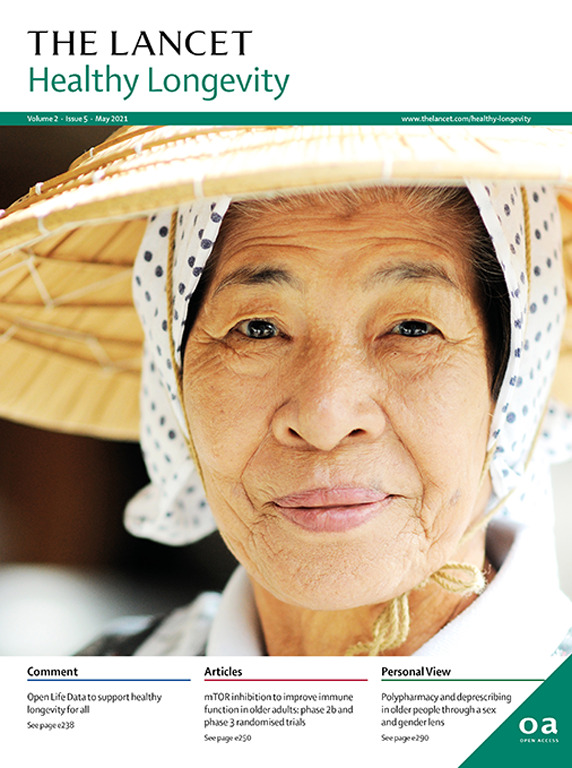Capturing what counts in muscle failure: a critical appraisal of the current operational models of sarcopenia
IF 14.6
Q1 GERIATRICS & GERONTOLOGY
引用次数: 0
Abstract
Sarcopenia was originally conceptualised to describe a neuromuscular condition that could help to explain, at least partly, the effect of unsuccessful ageing on the ability of older adults (ie, those aged 60 years and older) to maintain independent mobility. Over time, international committees have standardised the definition and operationalisation of sarcopenia. However, a key issue in diagnosing sarcopenia remains as the current definitions are primarily based on expert opinion, with no clear explanation or description of the method used to prioritise the diagnostic criteria for sarcopenia, rather than on the integration of subjective methods (eg, expert opinion) with hierarchical evidence and advanced statistical methodologies. This issue has led to considerable variability in the reported prevalence rates of sarcopenia, inconsistent findings regarding sarcopenia as a predictor of adverse outcomes, and major challenges in the development of effective non-pharmacological (eg, physical exercise, nutrition), pharmacological therapies, or reliable biomarkers of disease status. The ambiguity on what is being measured under the present definitions of sarcopenia raises the fundamental question of whether these models truly represent the most accurate and clinically useful constructs of age-related muscle failure. In this Personal View, we critically examine the current state of sarcopenia research and highlight the need for a revised approach that integrates physiological face validity and clinical applicability.
捕捉肌肉衰竭:对当前肌肉减少症操作模型的关键评估。
骨骼肌减少症最初的概念是描述一种神经肌肉状况,它可以帮助解释,至少部分地,不成功的衰老对老年人(即60岁及以上的人)保持独立活动能力的影响。随着时间的推移,国际委员会对肌肉减少症的定义和操作进行了标准化。然而,诊断肌少症的一个关键问题仍然存在,因为目前的定义主要基于专家意见,没有明确的解释或描述用于优先诊断肌少症的方法,而不是将主观方法(如专家意见)与分层证据和先进的统计方法相结合。这一问题导致报道的肌少症患病率存在相当大的差异,关于肌少症作为不良后果预测指标的研究结果不一致,并且在开发有效的非药物(如体育锻炼、营养)、药物治疗或可靠的疾病状态生物标志物方面面临重大挑战。在目前肌少症的定义下测量的内容的模糊性提出了一个基本问题,即这些模型是否真正代表了与年龄相关的肌肉衰竭的最准确和临床有用的结构。在本个人观点中,我们批判性地审视了肌少症研究的现状,并强调需要一种整合生理面部有效性和临床适用性的修订方法。
本文章由计算机程序翻译,如有差异,请以英文原文为准。
求助全文
约1分钟内获得全文
求助全文
来源期刊

Lancet Healthy Longevity
GERIATRICS & GERONTOLOGY-
CiteScore
16.30
自引率
2.30%
发文量
192
审稿时长
12 weeks
期刊介绍:
The Lancet Healthy Longevity, a gold open-access journal, focuses on clinically-relevant longevity and healthy aging research. It covers early-stage clinical research on aging mechanisms, epidemiological studies, and societal research on changing populations. The journal includes clinical trials across disciplines, particularly in gerontology and age-specific clinical guidelines. In line with the Lancet family tradition, it advocates for the rights of all to healthy lives, emphasizing original research likely to impact clinical practice or thinking. Clinical and policy reviews also contribute to shaping the discourse in this rapidly growing discipline.
 求助内容:
求助内容: 应助结果提醒方式:
应助结果提醒方式:


